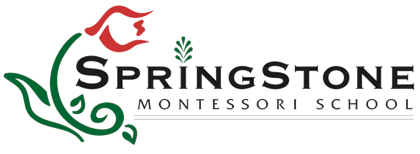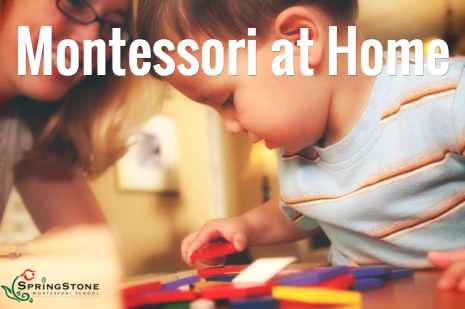Introducing two important Cultural materials – The Sandpaper and Colored Globe
The Sandpaper and Colored Globe
Geography is an exciting and fun part of the Montessori classroom. When children start exploring the Cultural area of the Montessori classroom, their work includes the recognition of features of our planet, such as land versus water. The children advance their Cultural study by learning about individual continents, countries and specific topographical language.
To prepare our children for all geography work, we begin by introducing two globes: The Sandpaper Globe and the Colored Globe.
Why do we start by introducing the Sandpaper Globe before we introduce the Colored Globe? It is because we first need children to understand the concept of the globe representing land and water before we go into details about the specific continents represented on the globes.
The Sandpaper Globe
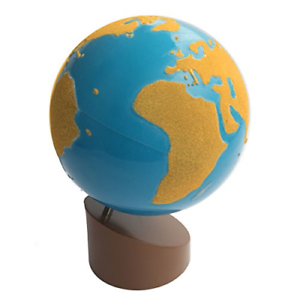
We may introduce the Sandpaper Globe by saying something like this, “This is our world. Our world is made of land and water.”
We need to keep in mind that exploring the earth as a globe may be a difficult concept for children to grasp at first, but this globe lays a great foundation for exploration!
The land areas are represented in tan sandpaper, and the water as a smooth, painted blue surface. The land and water portions are very easy to distinguish, both tactilely and visually.
When we touch the tan sandpaper portion, we may say, “This is land.” We will invite each child to take a turn to feel the land. Once we have explored various different land portions on the globe, we will do the same for the water portions.
To help with vocabulary retention for land and water, we can utilize the Three-period lesson to help the children easily identify and name land and water. This way, the child will also become comfortable with the bird’s eye view of land and water distribution over the planet!
The Colored Globe
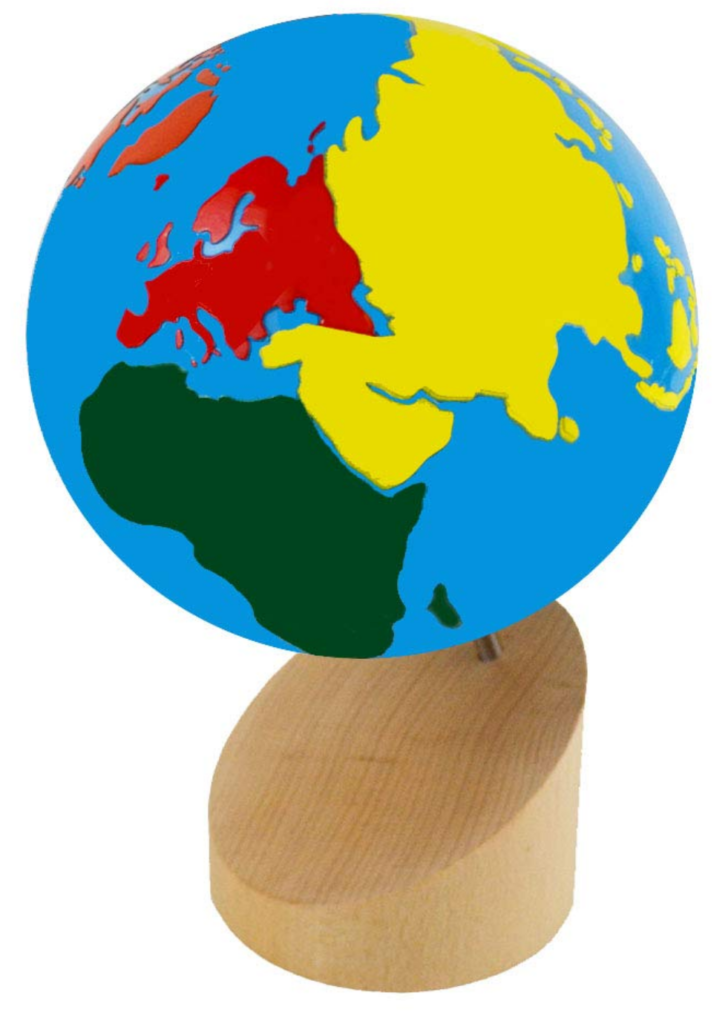
After children had an opportunity to work with the Sandpaper Globe, they can move on to the Colored Globe.
The Colored Globe is the exact same size as the Sandpaper Globe, but each continent is painted a different color, and there is no use of sandpaper. The oceans are the same painted blue.
In this presentation, instead of land and water, the children will focus on identifying continents with a specific color representing each continent. A Three-Period lesson is a helpful tool to give the children a strong vocabulary foundation, and the confidence to know the difference between continents and oceans.
Once the children have mastered their work with both the Sandpaper and Colored Globe, they will be ready for Puzzle Map work, beginning with the World Map. You will notice the continents on the Colored Globe and the World Map are the same colors, giving the child that ‘aha’ moment of recognition.
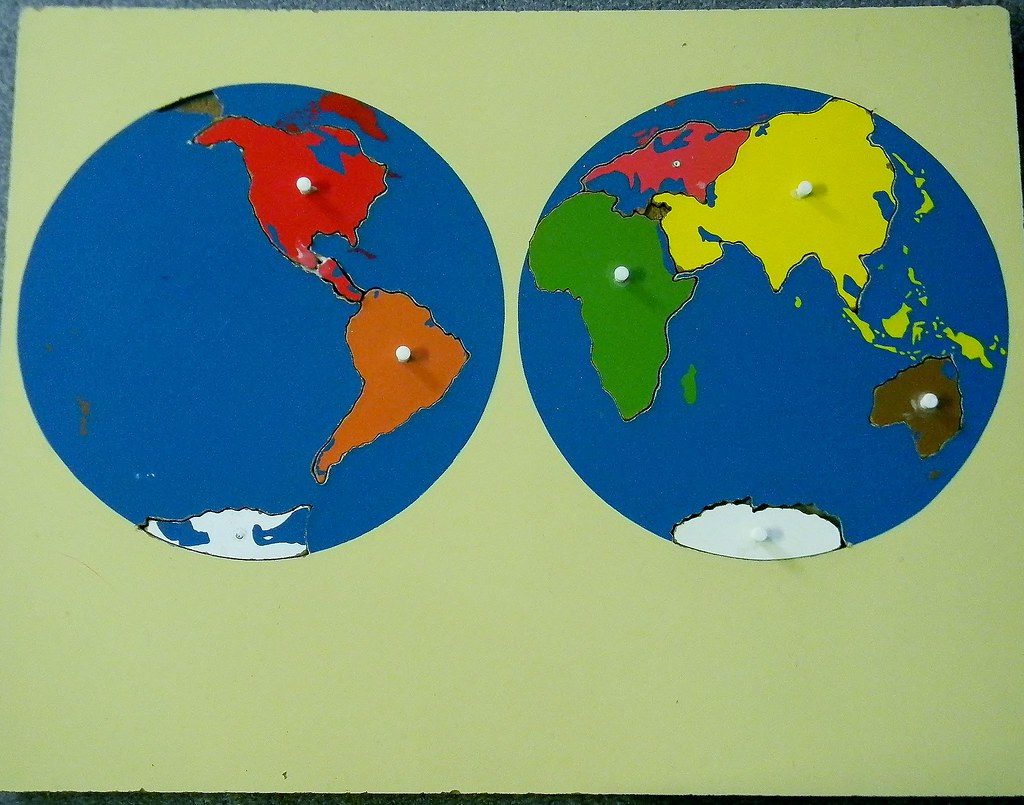
The Montessori classroom is full of layered connections, and places of discovery for the young child!
An Inspiring Montessori Quote to end this blog post
‘The senses, being explorers of the world, open the way to knowledge. Our apparatus for educating the senses offers the child a key to guide his explorations of the world…’
Dr. Maria Montessori
